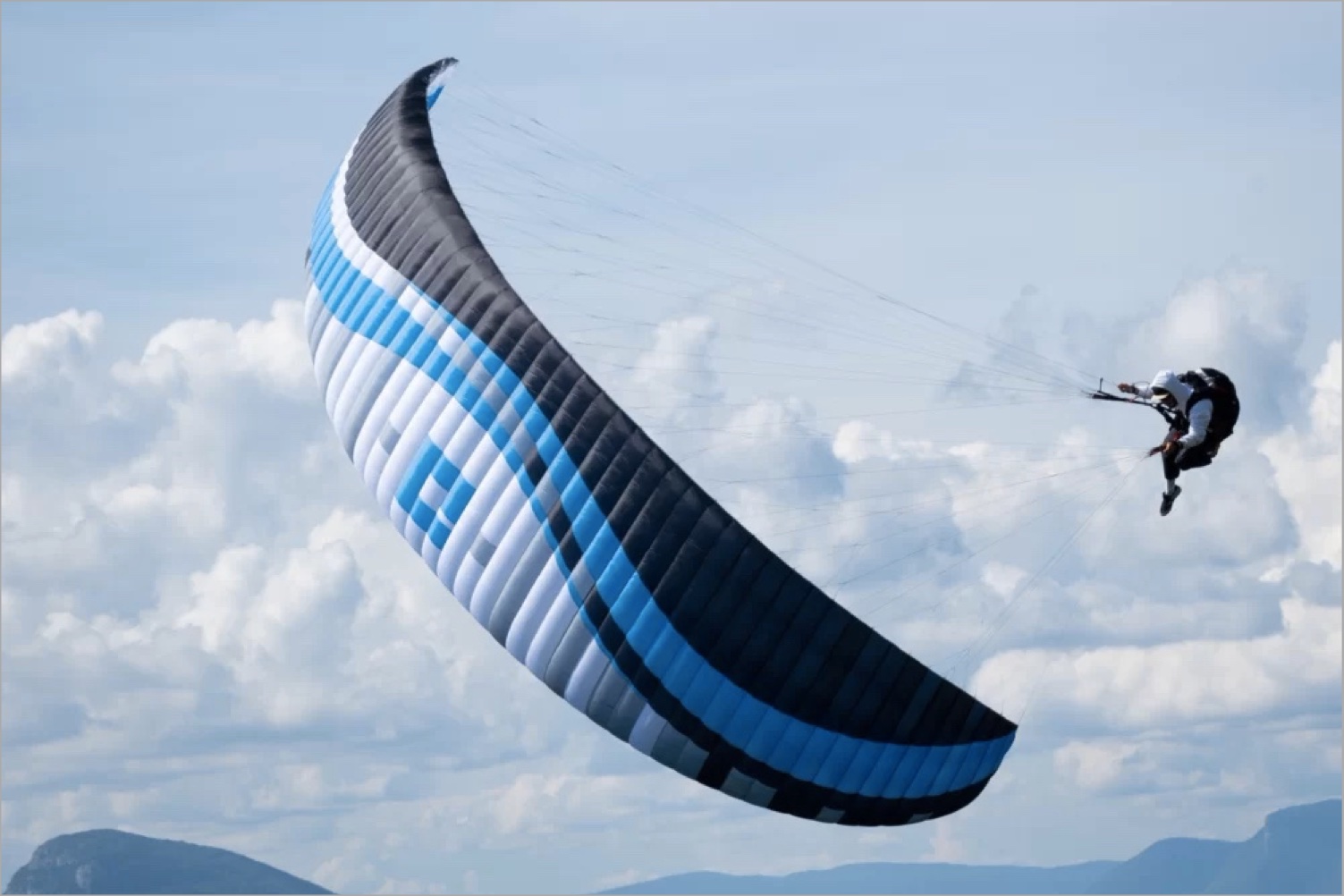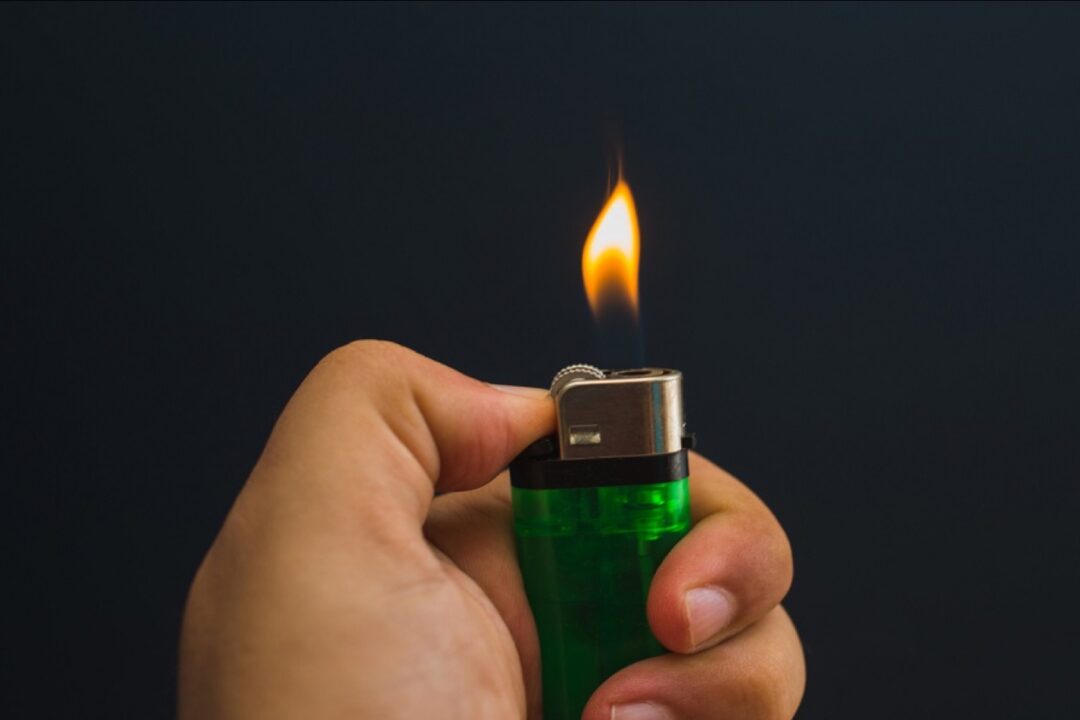Fly more safely! Do not pull the controls a bit just to “feel” the canopy.
With a modern paraglider, it is useless and dangerous to fly with a little amount of brakes (less than 10%) “to feel the canopy”!
Bruce Goldsmith
Pull the brakes a little (less than 10%) “damaged” the nice profile of your paraglider and removes its REFLEX effect
I had the opportunity to speak with Bruce, whom I have known for a long time. I had mentioned with him the “brakes slightly stretched to feel the canopy” as probable cause of accidents due to collapses close to the ground when there were no obstacles that could create rotors…
Bruce’s speech is very clear and argued on the subject!
I translated into French below the explanations given by Bruce in the video. For English you have the subtitles.
Eric Laforge
Mes remarques viennent de cours SIV (Simulations d’Incidents de Vol) où on doit avoir soit les mains tout en haut (pas de freins du tout), soit les freins tirés très bas.
Les freins tout en bas, c’est pour stopper une abattée ou pour faire un décrochage.
Les freins tout en haut, c’est pour que le parapente puisse reprendre son vol.
Le problème c’est que si on ne remonte pas complètement les mains, si l’on tire encore légèrement les freins, cela fait l’opposé de l’effet reflex. Ce qui fait que le parapente « shoote » plus. C’est ce que l’on voit dans les vidéos où le parapente plonge et le pilote tombe (ou presque ) dans la voile, c’est le plus souvent parce que le pilote garde les freins légèrement tirés.
Ce petit volet de freinage, de moins de 10 %, rend le profil plus instable en tangage et le fait plonger plus !
Cela s’applique aussi au vol thermique et au vol de distance.
Vous devez vous efforcer de voler bras hauts le plus possible. Vous pouvez utiliser les freins pour contrôler le tangage bien sûr, mais pour un instant seulement avant de revenir rapidement à la position bras hauts (pas de freins du tout).
Garder un peu de freins rend le parapente instable en tangage, ce qui est mauvais pour de nombreux motifs.
Ce n’était pas vrai avant ! La principale raison est la grande quantité de suspentes des vieux parapentes. Les caractéristiques du profil n’étaient alors pas déterminantes, vu l’énorme trainée des nombreuses grosses suspentes qui amortissait la voile.
Avec les « vieux » parapentes, on pouvait voler avec les freins un peu tirés pour mieux « flotter » dans la masse d’air. Maintenant, avec la trainée des suspentes très réduite et les profils bien plus efficaces, il faut absolument laisser voler le parapente, plutôt que de vouloir « flotter » avec les freins aux épaules !
Bruce Goldsmith
I insist and rephrase.
Slightly tightening the brakes makes the glider unstable in pitch which causes more colappses, while the initial idea was to reduce them. It’s a bit silly…
So it’s either HANDS UP, or more than 10% brakes!
We go up together in shuttle to take off. Yves does not fly paragliding very often. He tells me that as the wind is weak, we will have to run to take off.
I give him the advice not to leave too quickly to allow time for the sail to pivot to come to position above his head. This is part of my “Takeoff” course. And it works, Yves easily inflates the sail by walking and flies away quickly!
The conditions are weak. I fight like a devil to stay in the air. I arrive there for about an hour without being able to reach the official landing.
The shuttle comes to pick me up nicely with Yves who stayed in the air only about twenty minutes. He told me he had a collapse…
I am surprised that his EN-A wing was able to close during a short flight, with weak conditions.
I then have the idea to ask him what is the usual position of his hands. Yves replies: “A little brake to feel the canopy!”.
The instability in pitch created by the slight deformation of the profile caused the closure of Yves’s paraglider, whereas in an hour to fight, I did not even have a collapse primer with a EN-C 2 lines paraglider!
A little brake “to feel the canopy” causes pitch instability which is particularly dangerous near the terrain (cliffs, trees…) and the ground (landing) because it causes collapses.
Learn more about Yves Rossy JETMAN >
Learn more about the “Takeoff” course >
I propose a landing technique for more safety and precision.
Click the button below.
Pitch stability | other considerations
- The importance of having a correct brake adjustment, especially not too short!
- A too short setting makes the glider unstable in pitch in the same way as the obsolete “slightly tighten the brakes to feel the canopy”!
I wrote an article about brake adjustment >> HERE - Very efficient steering at the rear risers.
The high-performance paragliders are equipped with devices that act directly on the C risers and also on the B (generally at 50%). - For a 2-line paraglider, the device is installed on the rear risers (the B in this case). Special handles or bars allow steering by bearing that does not modify the profile.
With these steering devices at the rear risers, you can act as you please, without making the canopy unstable in pitch!
Active steering in summary
Large asymmetry of movements
The brakes are pulled quickly to avoid a potentially imminent collapse.
Always release the brakes slowly!
And above all, we return to the standard position which is HANDS UP, without pulling the brakes at all!
Eric Laforge
The full article by clicking on the button below!
How did I meet Bruce Goldsmith (and also Gin Seok Song and John Pendry)?
The anecdote about the usefulness of “HANDS UP”.
Eric Laforge
Who am I ?




